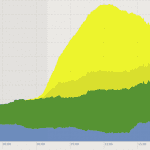Around The Web
Climate change: Urgency the main theme as COP24 opens
Killing of swan family in Kent brings calls for airgun regulation
Five cygnets and their parents were shot, wrapped in plastic bags and thrown down bank of a stream
A family of swans has been shot and killed in what has been called a “senseless” airgun attack.
The bodies of five cygnets and both of their parents were found wrapped in plastic bags after they were thrown down the bank of a stream in the village of Benenden, in Kent.
Continue reading...COP24: Countries step up to host 2019 UN climate talks after Brazil withdraws
Portrait of a planet on the verge of climate catastrophe
On Sunday morning hundreds of politicians, government officials and scientists will gather in the grandeur of the International Congress Centre in Katowice, Poland. It will be a familiar experience for many. For 24 years the annual UN climate conference has served up a reliable diet of rhetoric, backroom talks and dramatic last-minute deals aimed at halting global warming.
But this year’s will be a grimmer affair – by far. As recent reports have made clear, the world may no longer be hovering at the edge of destruction but has probably staggered beyond a crucial point of no return. Climate catastrophe is now looking inevitable. We have simply left it too late to hold rising global temperatures to under 1.5C and so prevent a future of drowned coasts, ruined coral reefs, spreading deserts and melted glaciers.
Continue reading...Supermarket ban sees '80% drop' in plastic bag consumption nationwide
Coles and Woolworths have prevented an estimated 1.5 billion bags being introduced into the environment
The ban on single-use plastic bags by Australia’s two largest supermarkets prevented the introduction of an estimated 1.5 billion bags into the environment, and the retail industry is hopeful this is only the beginning.
Coles and Woolworths’ decision to stop offering single-use disposable plastic bags midway through the year was initially met with swift public backlash.
Continue reading...Milestone – Australia renewables output hits 9GW for first time
 Renewables reach 9GW for first time on Saturday, and wind and solar do that without hydro on Sunday.
Renewables reach 9GW for first time on Saturday, and wind and solar do that without hydro on Sunday.
The post Milestone – Australia renewables output hits 9GW for first time appeared first on RenewEconomy.
Why some see Chile's plastic bag ban as a rubbish proposal
Woman takes in grey squirrel found injured in Somerset
Climate change: Where we are in seven charts and what you can do to help
Trams, bots and solar roads
Trump officials argue climate change warnings based on ‘worst-case scenario'
Official minimize warnings and say government report considers only the highest possible levels of greenhouse gas emissions
The Trump administration has a new strategy for deflecting concerns about the warming planet.
Related: Why no US region is safe from climate change
Continue reading...


